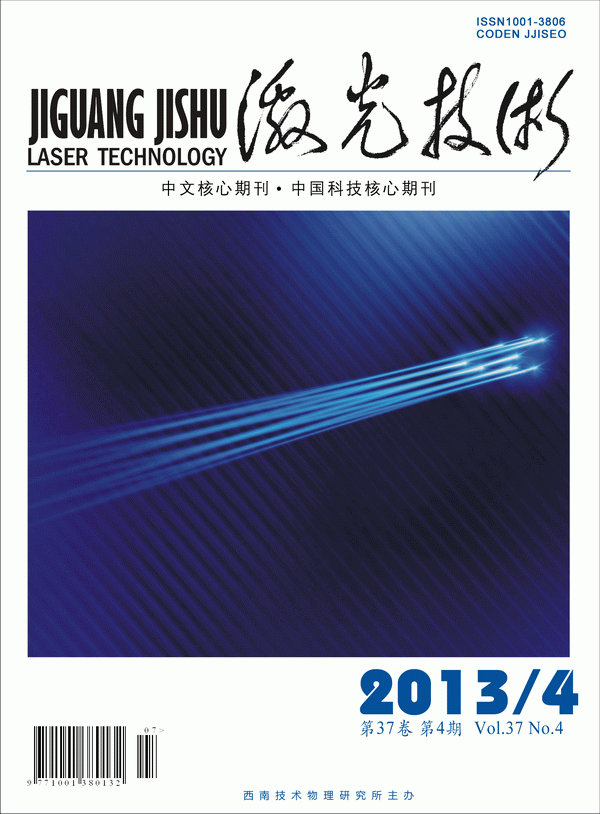Analysis of temperature field of laser cladding Ni-based alloy
-
1.
Department of Mechanical and Electrical Engineering, Lu'an Vocation Technology College, Lu'an 237158, China;
-
2.
Department of Mechanical Engineering, Anhui Vocational and Technical College of Defense Technology, Lu'an 237011, China
-
Received Date:
2012-11-05
Accepted Date:
2012-12-31
-
Abstract
In order to analyze the rules of temperature field and molten pool crystalline diversification during the preset powder Ni-based alloy cladding process, a 3-D model of laser cladding was made with finite element method. Taking consideration of the impact of temperature changes on the thermal physical parameters and the effects of heat convection and radiation heat, temperature field and solidification and crystallization of laser cladding process were analyzed and verified by SYSWELD software. The results show that the highest temperature is at the spot center, the isothermal line is almost elliptical and the temperature declines gradually along the radius of the spot center. Thermal cycle peak temperature at a certain point on the coating reduced significantly as the heat source was away. The temperature increased from the room temperature at the first pass to 730℃ at the final pass. Shape factor is reduced from 1.9109℃smm-2 of bonding surface to 0.7109℃smm-2 of cladding surface. At the same time, secondary dendrite spacing is the biggest at the bonding surface and the smallest at the cladding surface. The calculation results are perfectly matched with metallographic microstructure and solidification and crystallization theory. The results provide theoretical guidance for the optimization of laser cladding
-

-
References
|
[1]
|
DING L,LI M X. Numerical simulation of temperature field of laser cladding Co-based alloy coatings[J]. Laser Technology,2012,36(1): 103-106(in Chinese). |
|
[2]
|
SONG J, HUANG Y, PANG Zh H. Study on wear properties of Fe-based alloy coating by laser cladding[J]. Laser Technology,2010,34(3): 331-334(in Chinese). |
|
[3]
|
DING L,ZHU X Ch,LI M X. Numerical simulation of laser cladding Co-based alloy on the surface of copper[J]. Special Casting Nonferrous Alloys,2011,31(8): 710-714(in Chinese). |
|
[4]
|
DING L,HUANG D Y,LI M X. Temperature field distribution of laser cladding Co-based alloy on the surface of copper[J]. Heat Treatment of Metals,2011,36(11): 114-118(in Chinese). |
|
[5]
|
TABERNERO A, LAMIKIZ S, MARTINEZ E,et al. Modelling of energy attenuation due to powder flow-laser beam interaction during laser cladding process[J]. Journal of Materials Processing Technology,2011,212(12): 516-522. |
|
[6]
|
CHEN B S. Computer-aided welding technique[M]. Beijing: China Machine Press,1999: 107-168(in Chinese). |
|
[7]
|
GAO Y D,HE X. Simulation of welding based on ANSYS unit birth and death technology[J]. Hot Working Tchnology,2010,39(7): 120-126(in Chinese). |
|
[8]
|
ZHANG J,SONG J L,LI Y T. Numerical simulation of temperature field in multi-track overlapping power-feding laser cladding[J]. Heat Treatment of Metals,2012,37(10): 87-91(in Chinese). |
|
[9]
|
ZHANG D W,ZHANG X P. Solidification microstructure feature of the laser clad Ni and Ni+Cr3C2 alloy[J]. Translations of Materials and Heat Treatment,2009,30(2):152-157(in Chinese). |
|
[10]
|
WANG Z P,HU F Y,HU B,et al. Research on laser cladding super-alloy K418 by multi-pass and multi-layer method[J]. New Technology New Process,2009(4):78-80(in Chinese). |
-
-
Proportional views

-

 Map
Map



 DownLoad:
DownLoad: